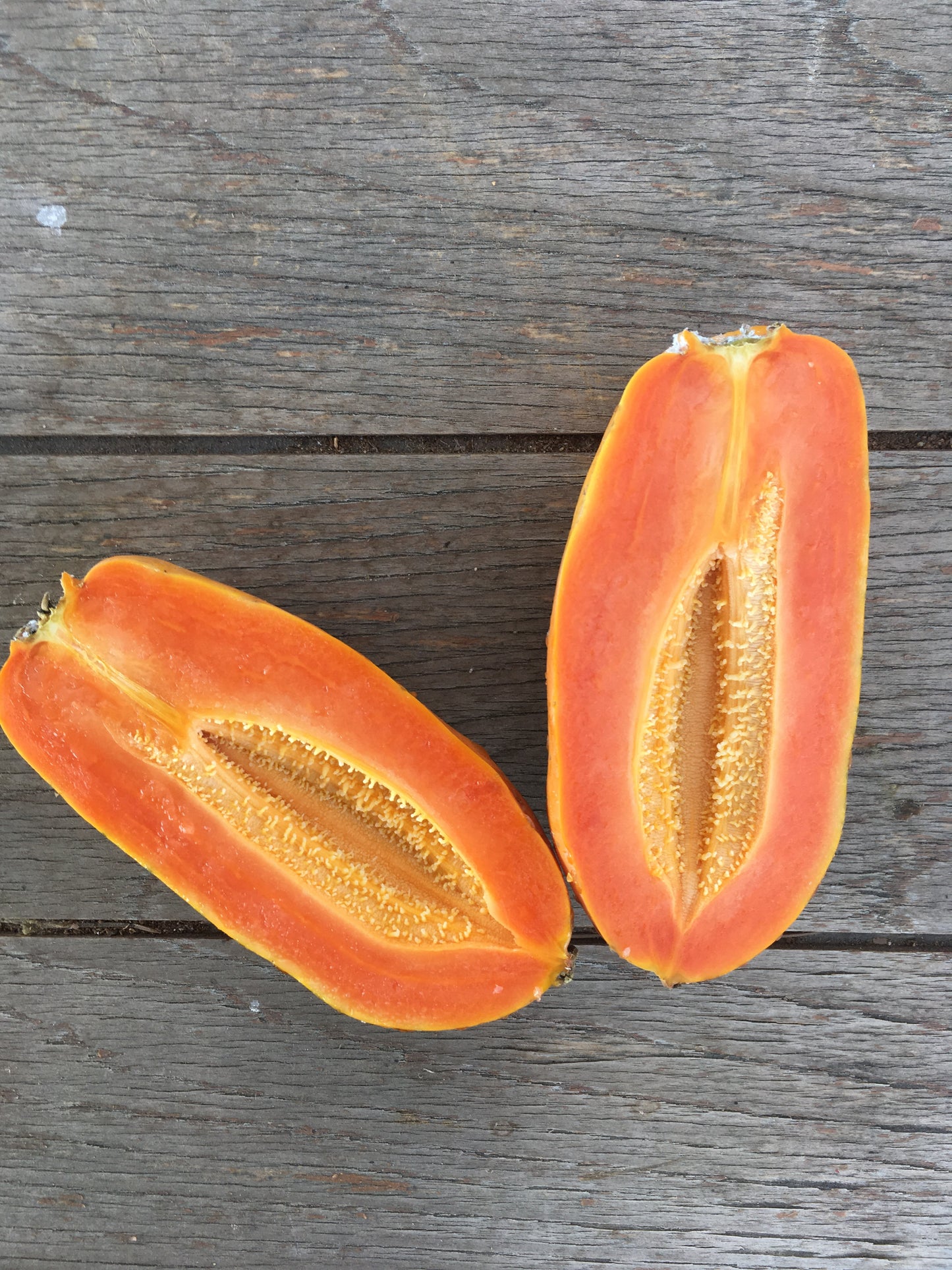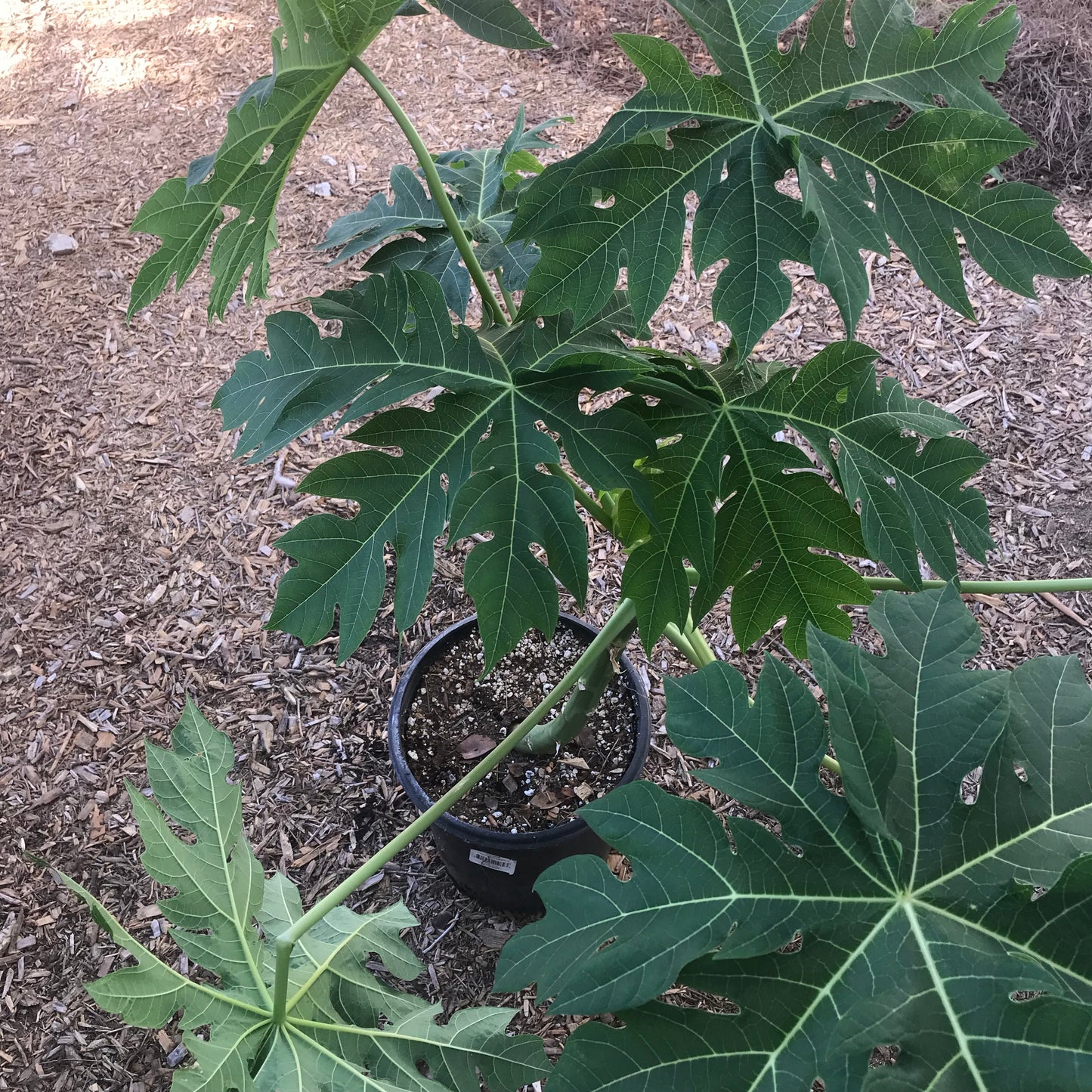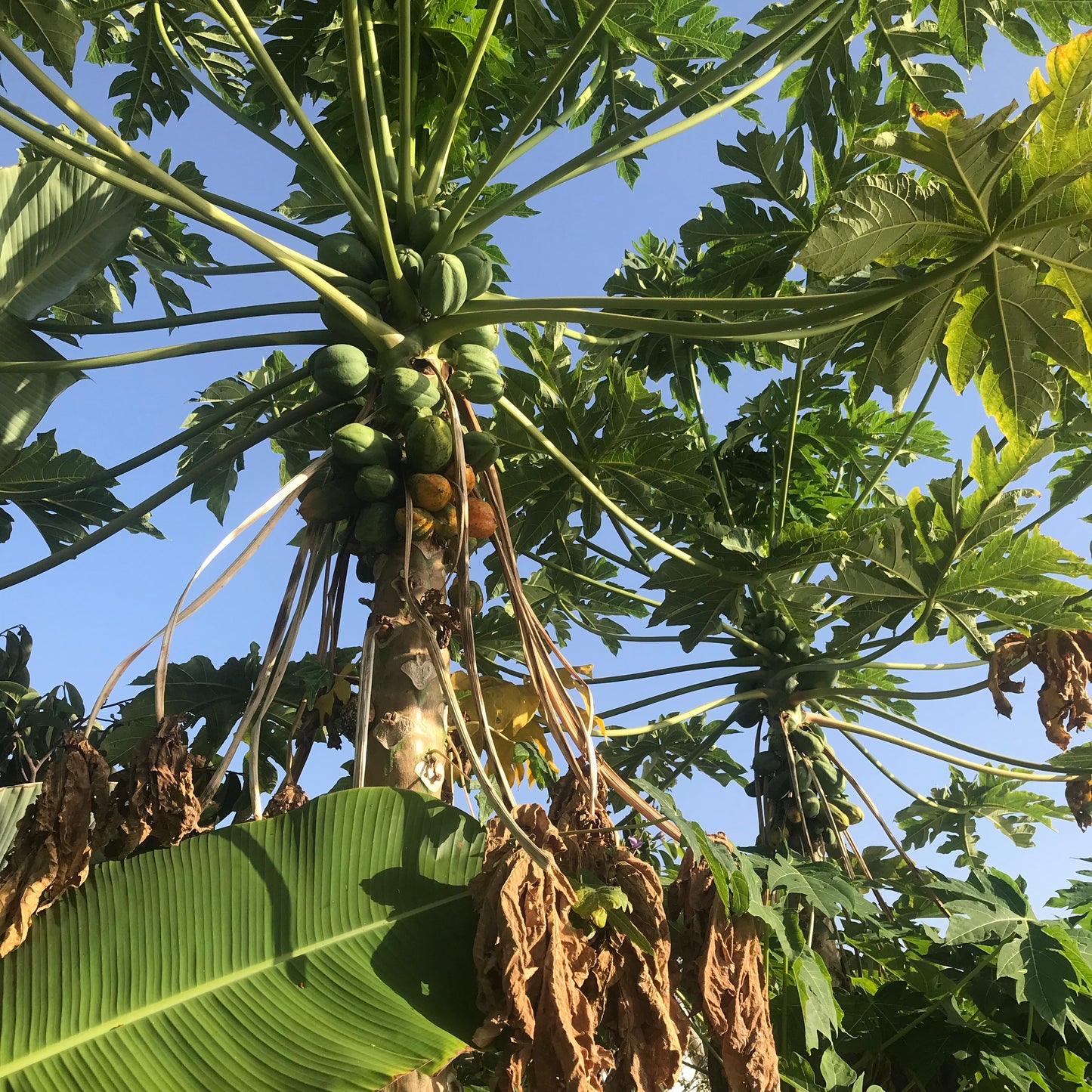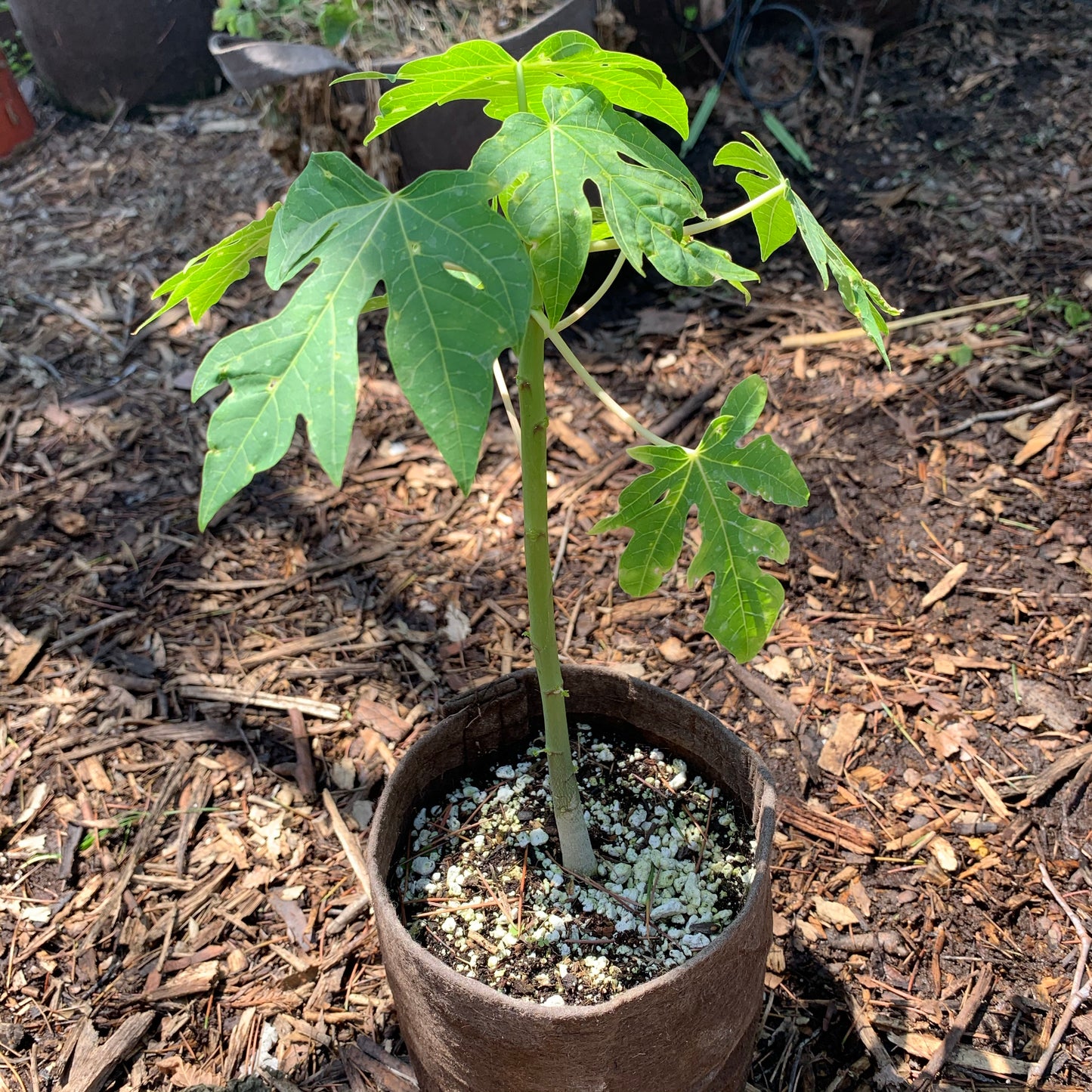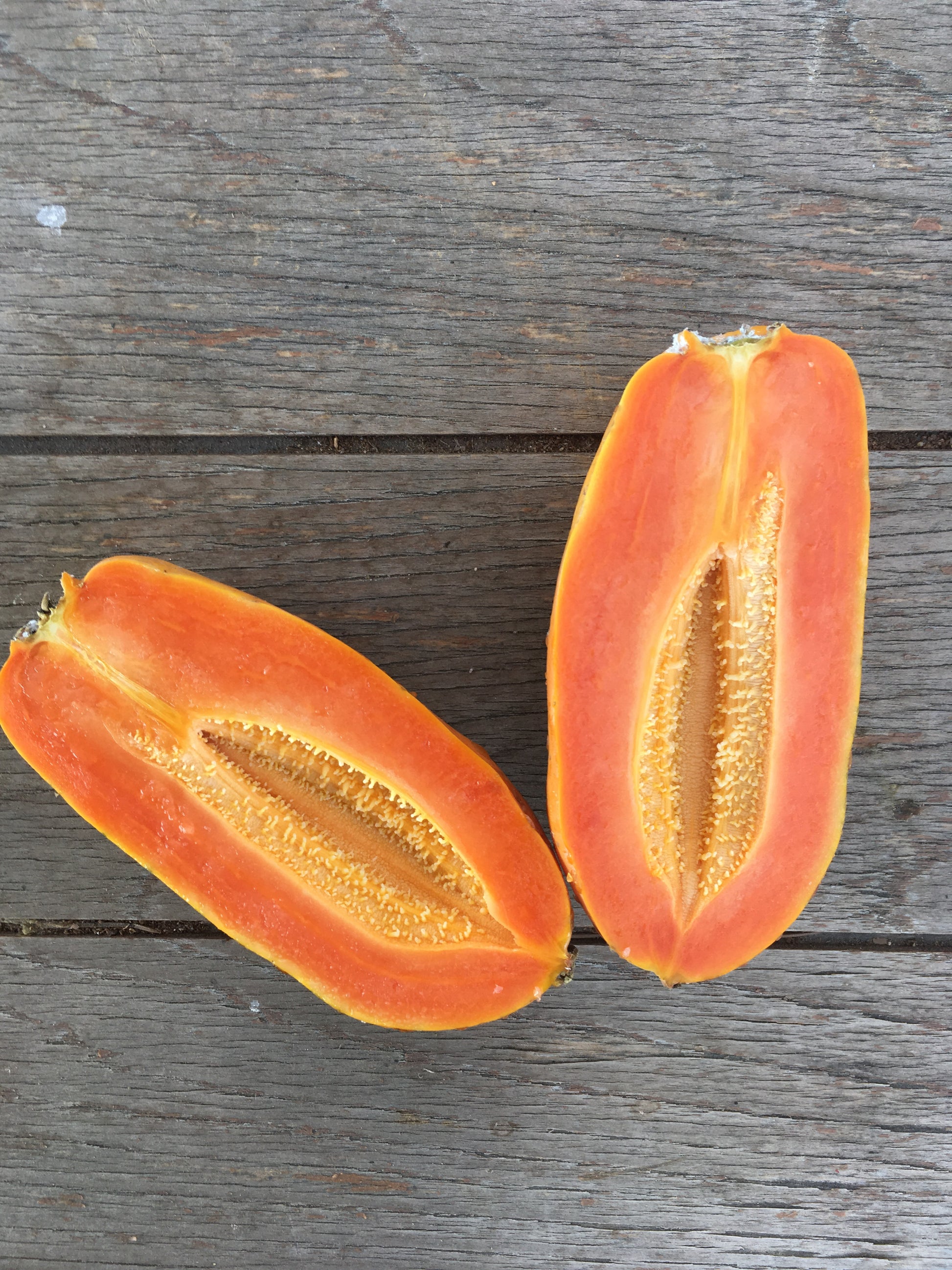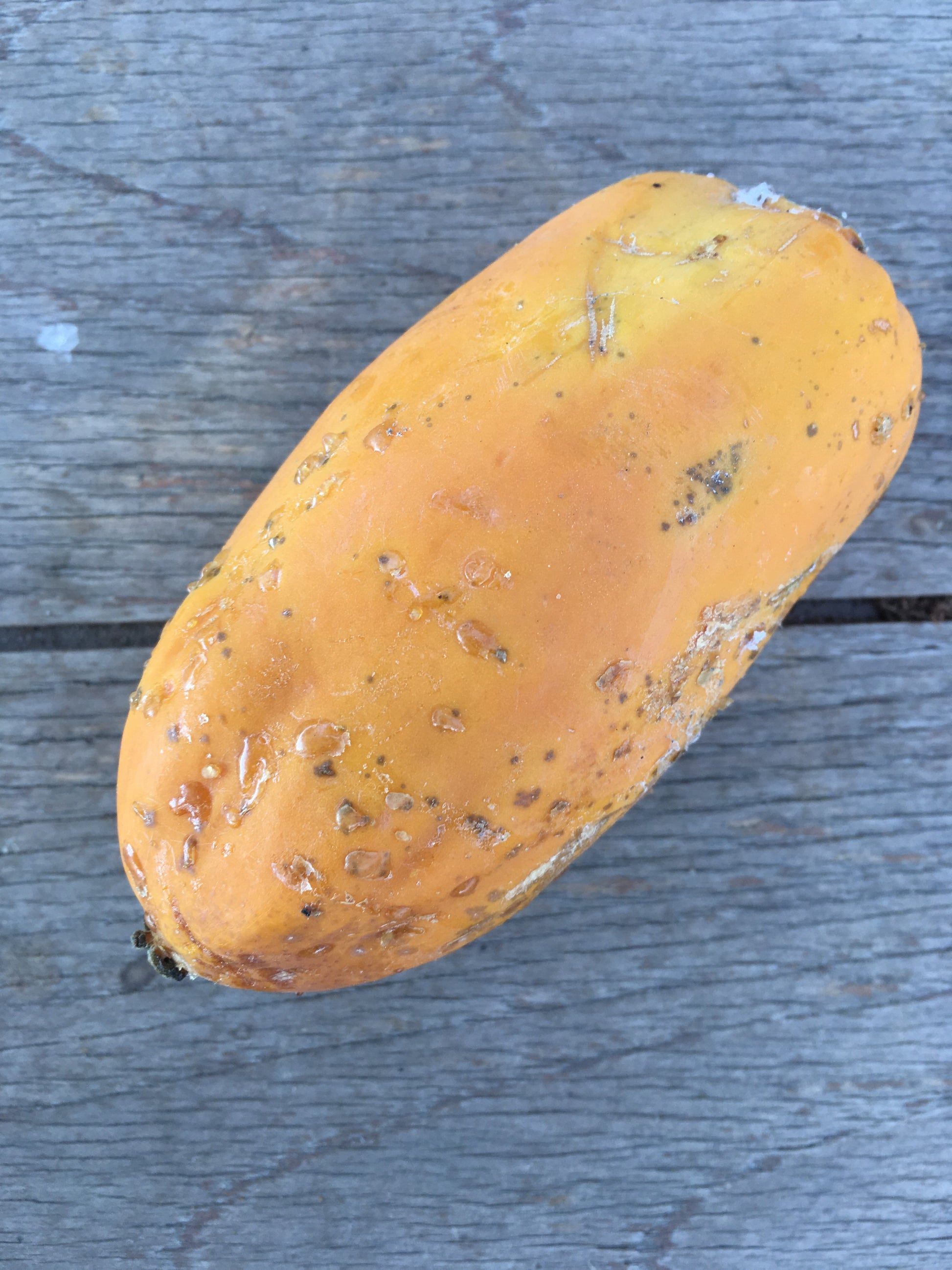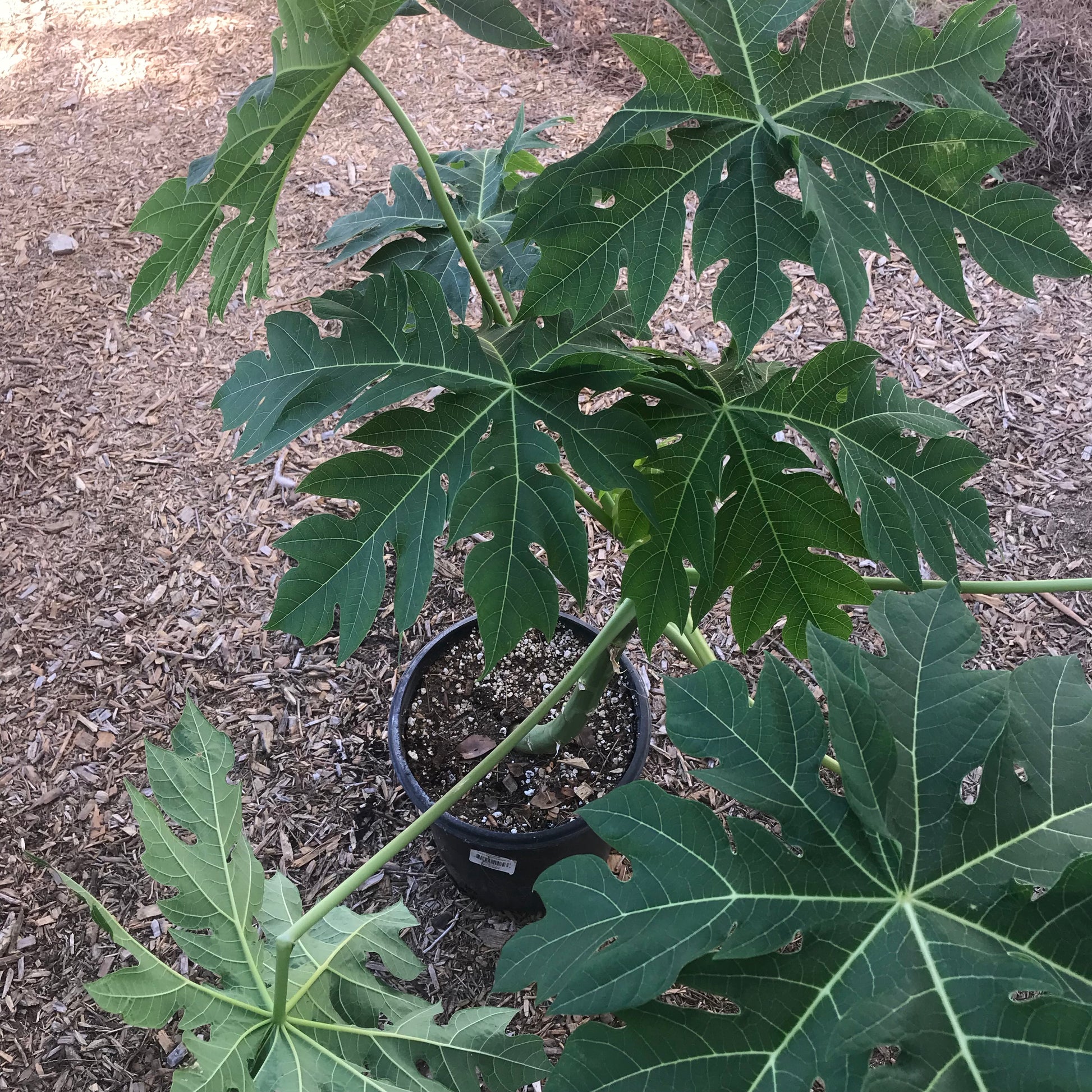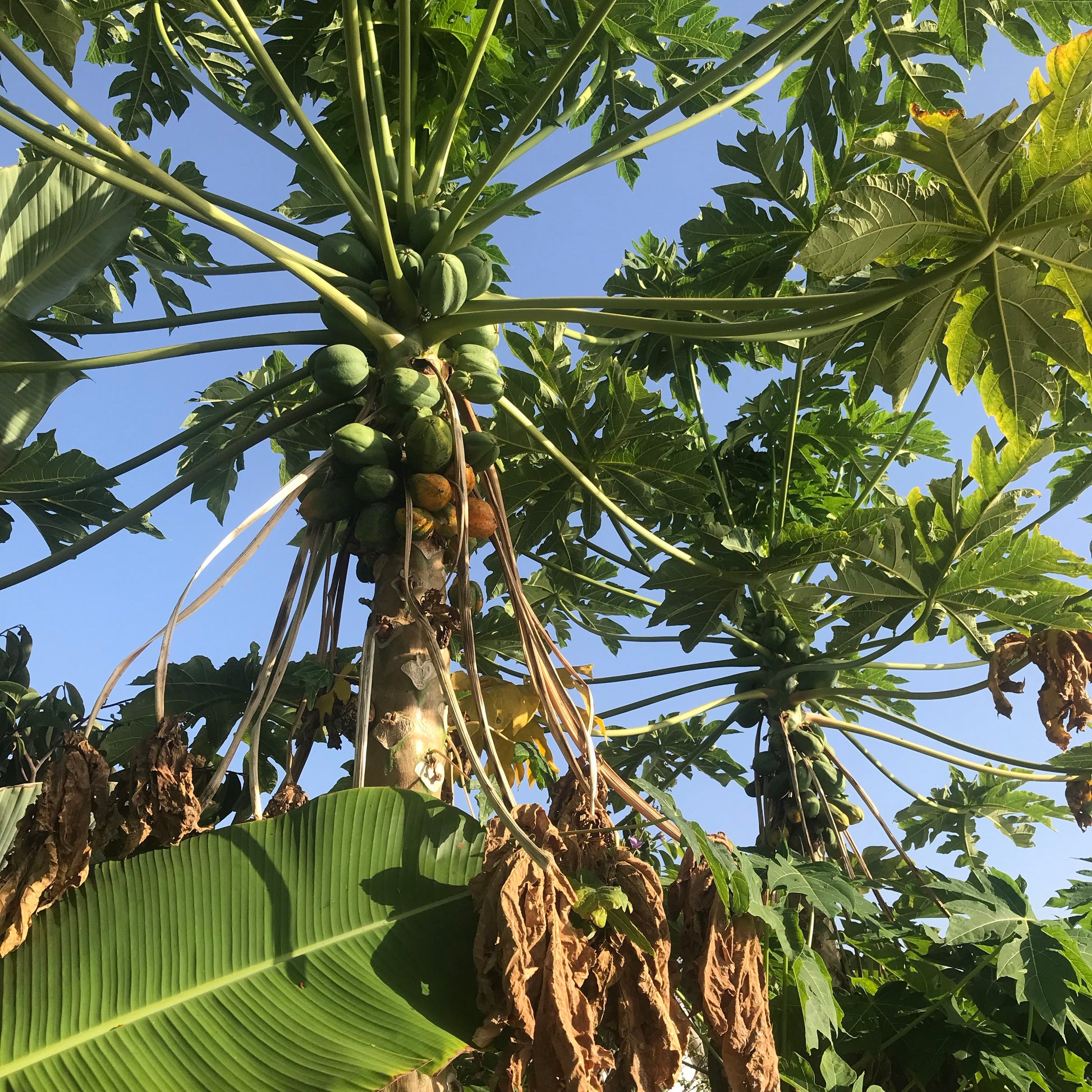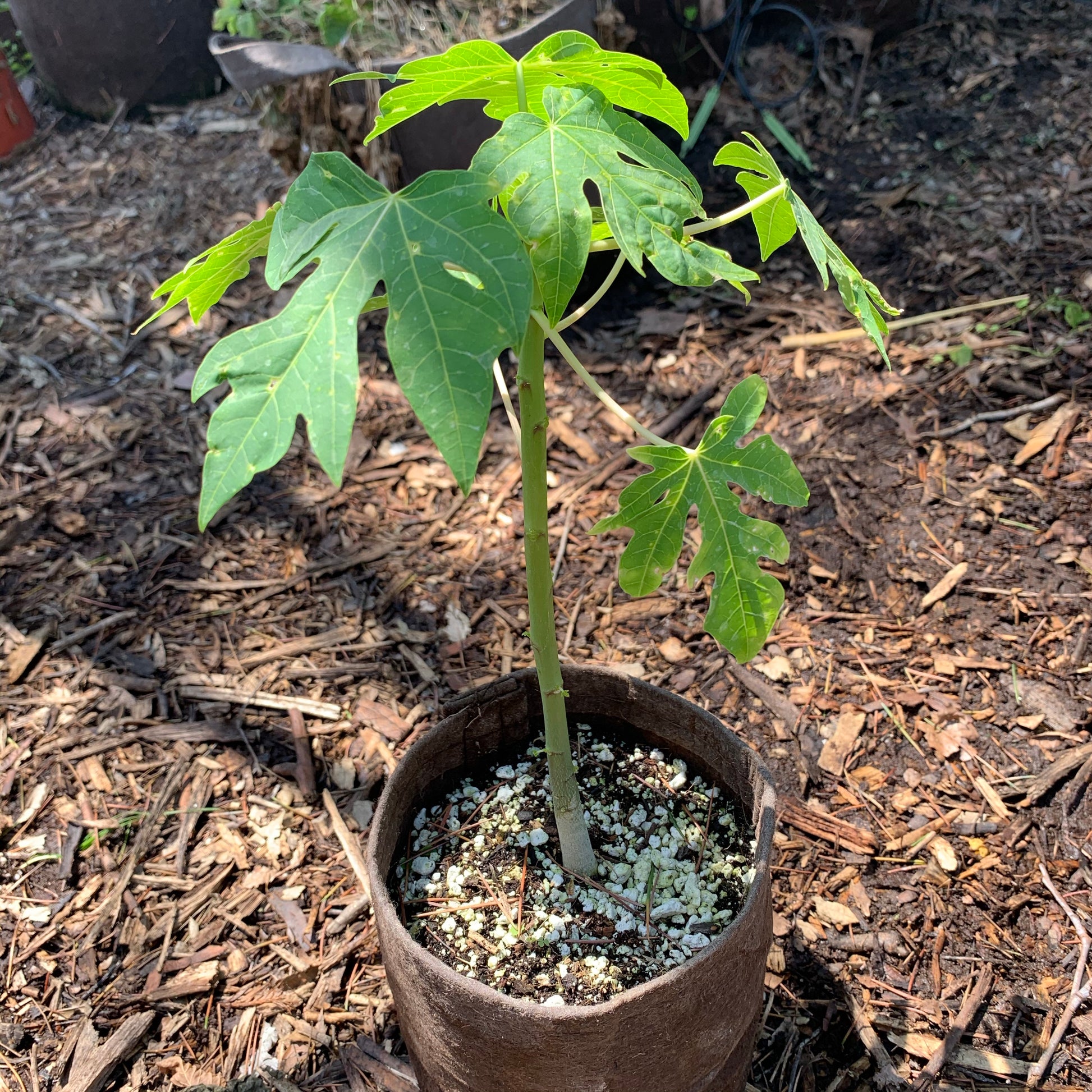Papaya, Waimanalo / Kamiya
Papaya, Waimanalo / Kamiya
3 inch Pot - 8 to 12" tall plant in 6" diameter x 7" tall pot. SHIPPABLE
1 gallon Pot - 8 to 16" tall plant in 5" x 5" x 6" tall pot. SHIPPABLE
Small Tree Pot - 8 to 16" tall plant in 5" x 5" x 6" tall pot. SHIPPABLE
Large Tree Pot - 8 to 16" tall plant in 5" x 5" x 12" tall pot. SHIPPABLE
3 gallon Pot - 18 to 36" tall plant in 10" diameter x 8" tall pot. IN STORE ONLY
5 gallon Pot - 30" to 60" tall plant in 11" diameter x 10" tall pot. IN STORE ONLY
15 gallon Pot - 60" to 75" tall plant in 17" diameter x 15" tall pot. IN STORE ONLY
Couldn't load pickup availability
Waimanalo Papaya
Waimanalo' variety, which has yellow-orange flesh and somewhat larger fruit than other 'Solo' papayas, is grown and marketed almost entirely on Oahu.
This papaya was developed in 1960 and was publicly introduced in 1968. In temperate zones it can be cultivated in large pots and taken indoors during the winter. As the name suggests, it starts bearing when very short and continues for a good couple of years.
Fruit Production: Papayas will bear fruit within a year, with the max production, happening in the first 2 years. Its good to replant papayas every 2 years.
Growth Habit: The papaya is a short-lived, fast-growing, woody, large herb to 10 or 12 feet in height. It generally branches only when injured. All parts contain latex. The hollow green or deep purple trunk is straight and cylindrical with prominent leaf scars. Its diameter may be from 2 or 3 inches to over a foot at the base.
Location: Papayas like to be warm with both sunshine and reflected heat, so the hottest place against the house where nothing else seems happy is an ideal location. They also like to be as free from wind as possible, although this is not as critical as their need for sun. Papayas can be grown successfully in shade, but the fruit is rarely sweet. They are best planted in mounds or against the foundation of a building where water can be controlled.
Soils: Papayas need a light, well-drained soil. They are easily killed by excess moisture. The soil needs to be moist in hot weather and dry in cold weather. Since this is the opposite of California's rain pattern, in addition to good drainage, plastic coverings to prevent over-wetting in winter may also be worthwhile. Papayas do not tolerate salty water or soil.
Irrigation: Watering is the most critical aspect in raising papayas. They should be kept on the dry side to avoid root rot, but also need enough water to support their large leaves. In winter the plant prefers to remain as dry as possible. A plant that has been injured by frost is particularly susceptible to root rot.
Fertilization: The fast-growing papaya requires regular applications of nitrogen fertilizers but the exact rates have not been established. Feed monthly and adjust according to the plant's response. They can take fairly hot organic fertilizing such as chicken manure if used with deep irrigation after warm weather has started. Phosphorus deficiency casuses dark green foliage with a reddish-purple discoloration of leaf veins and stalks.
Pruning: Papayas do not need to be pruned, but some growers pinch the seedlings or cut back established plants to encourage multiple trunks.
Frost Protection: Papayas need warmth and a frost-free environment, but can often withstand light freezes with some kind of overhead protection. This can be provided by building a frame around the plants and covering it with bedding, plastic sheeting, etc. when frost threatens. Electric light bulbs can also be used for added warmth. Potted specimens can be moved to a frost-secure area. Prolonged cold, even if it does not freeze, may adversely affect the plants and the fruit. Mexican papayas are more hardy than Hawaiian varieties.
CARE INSTRUCTIONS
Please see our Papaya Planting and Care InstructionsABOUT THIS PLANT
Botanic Name: Carica papaya
Fruiting Season: Spring-Summer
Growth Structure: Upward
Fertility Preference:
★
★
★
★
★
Water Preference:
★
★
★
★
★
Sun & Light Preference:
★
★
★
★
★
Years to Fruit: 1-3 Years
Fruiting Season: Spring-Summer
Pruning Season: N/A
Cold Tolerance: 32°F
Flowers? Yes,
Native to: Hawaii
Recommended Size for Container Growing: 15 Gallon
